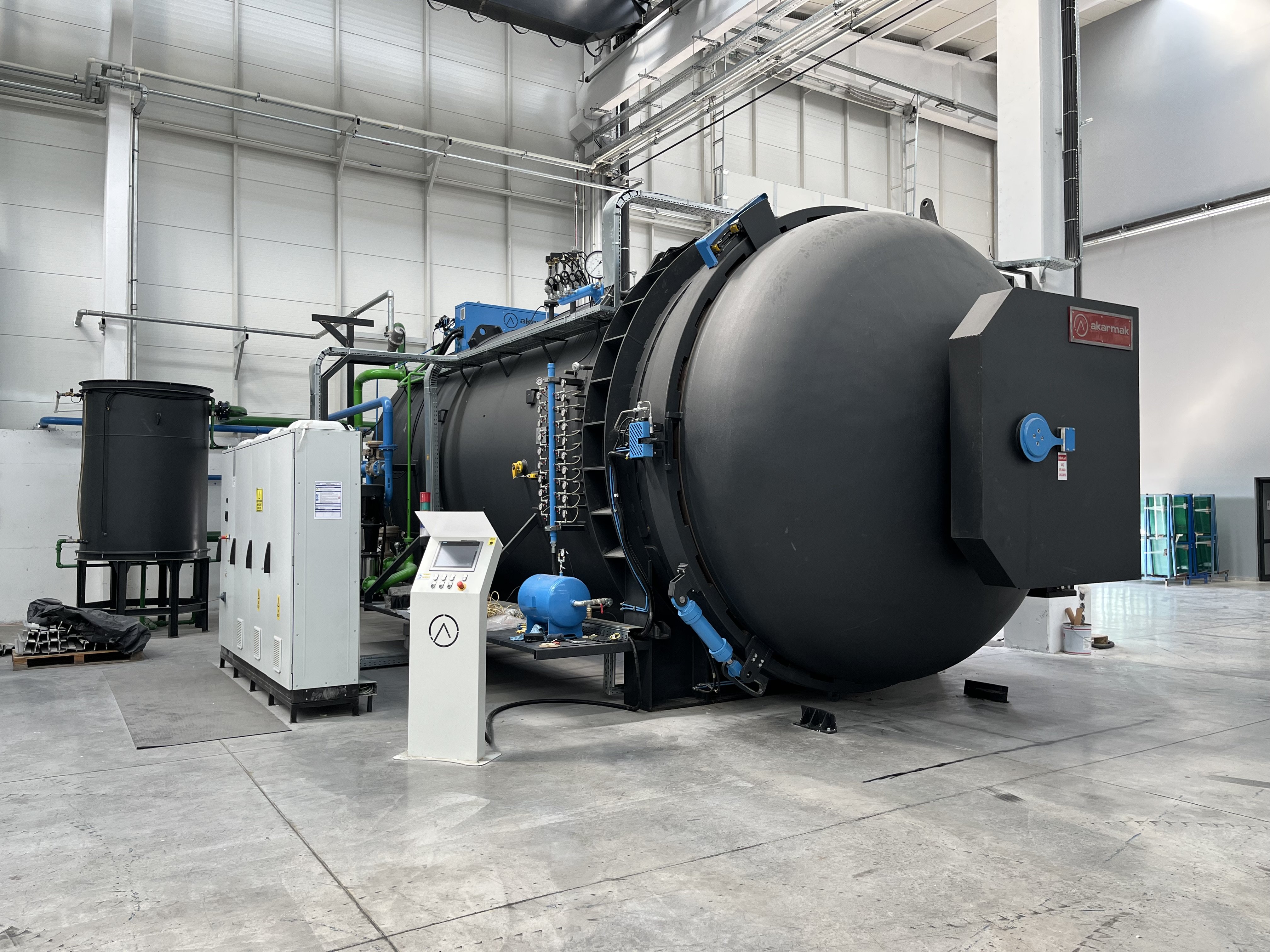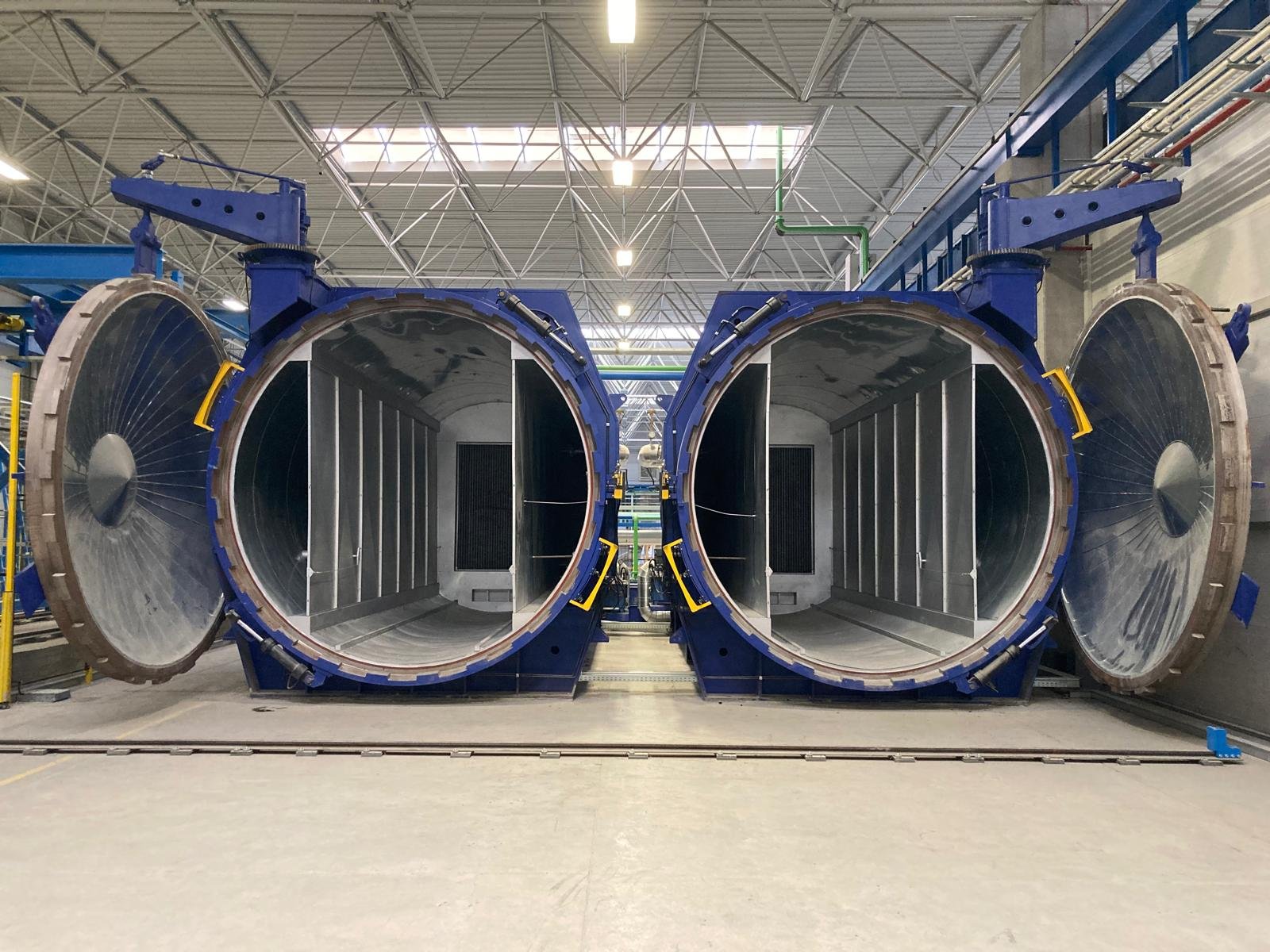New Generation SentryGlas® Xtra™ (SGX™) with Autoclave Process
In laminated glass production, the autoclave process is the fundamental stage that ensures the permanent bonding of glass sheets and polymer interlayers under high temperature and pressure. The chemical structure and processing properties of the interlayer material directly determine the parameters of the autoclave recipe. Therefore, correct definition of temperature, pressure, and cooling regimes is critical not only for the optical and mechanical performance of the final product but also for production efficiency. In this article, the autoclave processes of EVA, PVB, SentryGlas®, and the new generation SentryGlas® Xtra™ (SGX™) will be compared; the advantages of the new generation SGP will be discussed in detail.
Autoclave Process with EVA Interlayer, Ethylene vinyl acetate (EVA) is an interlayer particularly preferred in decorative applications. EVA films melt at approximately 100–110 °C and adhere to glass surfaces. Compared to PVB, EVA requires lower temperatures and does not require pressure. When an autoclave is used instead of an EVA furnace, high optical quality is achieved thanks to uniform thermal distribution. High resistance to moisture is a significant advantage; however, due to its limited structural strength, EVA is mostly used in interior and decorative solutions.
Autoclave Process with PVB Interlayer, Polyvinyl butyral (PVB) is the most commonly used interlayer material in the laminated glass industry. PVB lamination is typically carried out at 120–150 °C and 10–15 bar pressure. In the autoclave, the temperature is raised up to around 130 °C and held at this level for 30–60 minutes. During the cooling phase, pressure is maintained until the temperature drops to about 60 °C, ensuring that the film does not detach from the glass while transitioning from soft to solid state. This recipe results in a total cycle time of 4–6 hours. While PVB offers advantages in terms of mass production suitability and transparency, its disadvantages include moisture sensitivity, structural limitations, and long-term color shifts in thick laminated glass.

Autoclave Process with SentryGlas® Interlayer, SentryGlas® is an ionoplast-based film that provides approximately twice the load-bearing capacity, one-quarter the elongation, and five times the tear strength compared to PVB. These superior properties make it ideal for structural glass applications. During the autoclave process, it is typically laminated at 130 °C and 10–14 bar pressure. However, the cooling stage is especially critical. If sufficient cooling rate is not achieved, haze can form on the film surface. Therefore, an optimal cooling rate of 2.5 °C/min is recommended. Yet, in the case of thick laminated glass or heavy loads, the cooling capacity of the autoclave may decrease. Particularly in thick SentryGlas laminates, insufficient cooling may lead to opacity in the final product. As a result, standard PVB recipes and full loads are not always suitable for SentryGlas applications. Manufacturers who wish to use the same autoclave often have to reduce loading, which initially created efficiency issues for some producers when SentryGlas was first introduced. As a solution, new autoclaves with higher cooling capacities were preferred in new investments.
Autoclave Process with the New Generation SentryGlas® Xtra™ (SGX™), The new generation SentryGlas® Xtra™ (SGX™) has been developed to maintain the mechanical performance of SentryGlas while offering wider tolerance ranges in the autoclave process. The most important innovation is the elimination of sensitivity during the cooling stage. The haze problem, caused by slow cooling in SentryGlas, has been completely solved with SGX, removing the need for special autoclaves with high cooling capacity. As a result, high optical clarity has become much easier to achieve, and production efficiency has significantly improved. Another critical advantage of SGX in the autoclave process is the increase in loading capacity. While cooling restrictions in SentryGlas laminations previously prevented full autoclave loading, SGX eliminates this limitation and allows denser loads. Consequently, more glass can be laminated in a single cycle, providing advantages in both production efficiency and cost per square meter. In addition, since SGX can be processed under the same conditions as standard PVB recipes, it offers high flexibility in production lines. This feature allows different products to be processed in a single autoclave cycle, providing operational convenience to manufacturers.
Conclusion, While PVB continues to be one of the fundamental materials of the industry with its conventional applications, SentryGlas created a revolution by meeting structural strength and safety expectations. However, the strict parameter requirements of the autoclave process posed efficiency limitations. The new generation SentryGlas® Xtra™ (SGX™) eliminates these limitations, establishing a new standard in the industry with wider process tolerances, high optical quality, reliable adhesion, and increased loading capacity. Therefore, SGX not only enhances the quality of the final product but also elevates autoclave efficiency and production economics to a higher level.


